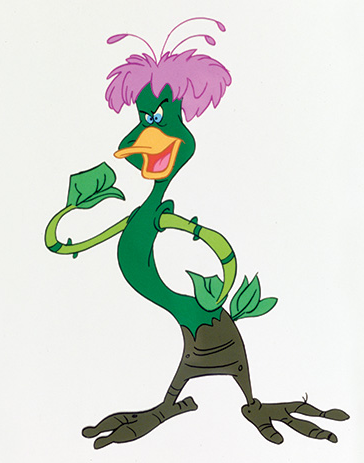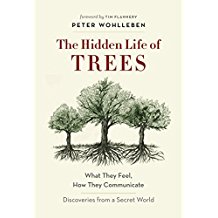 One of the hallmarks of the Disney animated TV show “Darkwing Duck” was a cadre of eccentric villains, like Dr. Reginald Bushroot, a vengeful botanist who became part plant after a failed experiment (http://darkwingduck.wikia.com/wiki/Bushroot). I recalled this when I read about a German forester who is giving plants credit for some very human characteristics.
One of the hallmarks of the Disney animated TV show “Darkwing Duck” was a cadre of eccentric villains, like Dr. Reginald Bushroot, a vengeful botanist who became part plant after a failed experiment (http://darkwingduck.wikia.com/wiki/Bushroot). I recalled this when I read about a German forester who is giving plants credit for some very human characteristics.
Peter Wohlleben has written a best-selling book entitled The Hidden Life of Trees: What They Feel, How They Communicate — Discoveries from a Secret World (https://www.amazon.com/s/ref=nb_sb_noss_1?url=search-alias%3Dstripbooks&field-keywords=hidden+life+of+trees). According to the description on Amazon.com, “Much like human families, tree parents live together with their children, communicate with them, and support them as they grow, sharing nutrients with those who are sick or struggling and creating an ecosystem that mitigates the impact of extremes of heat and cold for the whole group. As a result of such interactions, trees in a family or community are protected and can live to be very old. In contrast, solitary trees, like street kids, have a tough time of it and in most cases die much earlier than those in a group.”
Could he really be onto something? There is an interesting article about Mr. Wohllenben in the March 2018 issue of Smithsonian magazine that provides details for this fascinating subject (“The Whispering of the Trees” by Richard Grant). For example, Wohlleben claims trees can communicate through the air by using pheromones and other signals. When the umbrella thorn acacia tree of sub-Sahara Africa has its leaves eaten by a giraffe, it sends a distress signal by emitting ethylene gas. Neighboring trees can sense this gas and start pumping tannins into their leaves in large enough quantities to sicken or even kill a large animal.
Of course, giraffes didn’t get to be that big without having tricks of their own. They browse into the wind so the gas doesn’t reach trees ahead of them, and if there is no wind, they’ll walk about 100 years, out of the range of the gas, to feed again.
So on both ends, we aren’t the only living things on this planet who have some control over our lives. This is going to be a must-read for any plant lover.
